Crete, the largest and most populous Greek island, is known for its beaches, ancient ruins, and vibrant cities. Crete offers diverse adventures and Cretan foods, allowing visitors to explore its renowned culinary tradition. Cretan cuisine, one of the world’s oldest, combines simplicity with rich flavor, making it both nutritious and delicious. While it shares some similarities with Greek cuisine, Cretan cooking has unique characteristics that set it apart. Cretan cuisine emphasizes fresh, local ingredients, including fish, mountain herbs, greens, bulbs, distinctive cheeses, and the famous Cretan olive oil. Cretan Drinks Crete’s mountainous landscape and strong traditional culture further distinguish it from mainland Greece. Crete’s drink culture centers around three main drinks: raki (tsikoudia), a strong grape-based spirit, local wines, craft beers from the island’s expanding microbrewery scene, greek coffee and Cretan Mountain Tea.
Car Rental in Crete is a great choice if planning to do a lot of stuff in Crete. It gives tourists freedom on how and when they want to visit a particular attraction or restaurant in Crete to enjoy the palatable dishes Crete has to offer. It also allows visitors to reach places that are difficult to get to. Crete budget-friendly restaurants are affordable and accessible, which makes the stay and visit enjoyable and worth it. Greece and Crete is popular for its delicious food, location, and services. Cretan foods, and European, Mediterranean, and Greek cuisines are made from fresh ingredients. It seems sensible that tourists who travel to Crete for the vibrant history and breathtaking scenery end up falling in love with Cretan food.
Listed below are the 11 Famous Foods and Drinks to Try in Crete.
- Olive Oil: Olive Oil is known as “Liquid Gold”. Without it, nothing is cooked. Meats, cheese, salad, veggies, and bread. It is fantastic and covers everything.
- Raki: It is the Cretan people’s national drink. Every meal is nearly automatically followed by its serving.
- Loukoumades: The Greek equivalent of doughnuts, are small, fluffy, honey-sweetened balls that are deep-fried until they are ideally golden and crispy.
- Dakos: It is a wonderful Greek meze or salad that is similar to bruschetta but is made with barley rusks or paximadi rather than bread.
- Fried Snails: Snails, which are pan-fried in their shells and frequently in copious amounts of olive oil or in a bed of salt, are the main component of this traditional Greek dish.
- Kalitsounia: classic, a small-sized snack that is both savoury and sweet and originates from the Greek island of Crete. It comes in all different shapes.
- Paximadi: Paximadi also referred to as rusks, are the conventional Cretan method of long-term bread preservation. These tiny, hard bread pieces are repeatedly baked and softened by the addition of water or olive oil.
- Gamopilafo: Gamopilafo is a rice dish served during conventional Cretan weddings. It is made in a rich meat broth, similar to a deluxe risotto, using long-simmered goat, lamb, or chicken.
- Sarikopitakia: Sarikopitakia are pastries with sheep’s cheese filling that are fried in olive oil and served hot with honey on top. The dough contains tsikoudia, Cretan grape-based alcohol.
- Lamb Stamnagkathi: Stamnagkathi with lamb is a traditional meal because it can only be found in Crete. Although it has a small bitterness, the taste is still pleasant. It typically goes well with lamb recipes and is served boiled with olive oil and lemon.
- Cretan Cheeses: Cretan Cheeses are often made from sheep, goats, or a combination of the two, and each type of cheese has a regional variation. Best served as a dessert or as a side dish with bread, fruit, and honey.
1. Olive Oil
In Crete, Olive Oil is known as “Liquid Gold”. Without it, nothing is cooked. Meats, cheese, salad, veggies, and bread. It is fantastic and covers everything. When visiting Elafonissi, you can smell the olives for miles. Olive Oil is readily available and comes in a variety of quantities and different shapes and sizes. In contrast to most souvenir shops throughout the world, which sell shot glasses, hoodies, and magnets, Olive Oils may be found in plenty in Crete. It becomes the ideal gift to bring back to loved ones. Cretan Olive Oil is renowned for its superior taste, potent scent, and great nutritional content. Today, extra virgin olive oil makes up the majority of Cretan olive oil production. The production of extra virgin olive oil that is certified organic has increased in Crete during the past ten years.
2. Raki
In Crete, Raki is an alcoholic drink that is frequently provided complimentary after a meal. Raki is made in Autumn following the grape harvest season. It is made using leftovers from the wine-making process. There are a lot of leftovers when the grapes are pressed and the juice is kept to start fermenting. The remaining skins, twigs, and other materials are kept in storage for about six weeks before being distilled into Raki. It is really potent and a fantastic palette cleanser. On Crete, Raki is the beverage that is virtually always provided. This Cretan beverage is seen as a sign of social interaction, dignity, and friendliness. Simply said, it is the Cretan people’s national drink. Every meal is nearly automatically followed by its serving.
3. Loukoumades
Loukoumades, a baked pastry, are consumed with ice cream, almonds, and honey. Loukoumades, the Greek equivalent of doughnuts, are small, fluffy, honey-sweetened balls that are deep-fried until they are ideally golden and crispy. It is frequently garnished with grind walnuts or toasted sesame seeds, honey syrup, and cinnamon, and served warm. Greek salad, chicken souvlaki served in the summer, traditional moussaka, and melt-in-your-mouth lamb souvlaki all go well with loukoumades as a dessert.
4. Dakos
Every region of Crete has its own name for the perennially popular Dakos; some call it Koukouvagia (literally, “owl”); others call it kouloukopsomo (literally, “puppy bread”). It is a wonderful Greek meze or salad that is similar to bruschetta but is made with barley rusks or paximadi rather than bread. The softened rusks are slightly dipped in water or in olive oil. And then mizithra, a creamy milk cheese made from sheep or goat’s milk, is dripped on top. Salt, oregano, and pepper are then sprinkled on top, followed by a drizzle of olive oil.
5. Fried Snails
Not just the French consider snails to be a delicacy. In reality, people have been eating snails for ages. Snails, which are pan-fried in their shells and frequently in copious amounts of olive oil or in a bed of salt, are the main component of this traditional Greek dish. With the addition of vinegar or herbs like parsley or rosemary, the dish is elevated to bring more aroma and flavour. The strange name, which translates roughly to “popping fried snails,” alludes to the jarring noise the snails produce when they are cooked. Others assert that it derives from the Cretan term abouboura, which means to turn over. With crusty bread and a glass of raki or ouzo served on the side, the snails are customarily eaten with toothpicks while being presented with the shell. Snails are called chochlios in the Cretan language. In this recipe, snails are fried in flour and heated olive oil before being covered with wine or could also be vinegar and prepared for serving. Some prefer to include a tiny bit of wild rosemary. Women in the locality manually gather the snails, which are then prepared live.
6. Kalitsounia
Kalitsounia, also known as skaltsounia, is a classic, small-sized snack that is both savoury and sweet and originates from the Greek island of Crete. It comes in all different shapes. In its purest form, it consists of an unleavened pastry with a fresh cow’s milk cheese filling called mizithra. The cheese is enhanced in the sweet types by cinnamon and lemon zest, and occasionally spinach is added to the savoury varieties. Despite being historically connected to Easter, it is now a year-round favourite.

7. Paximadi
Paximadi, also referred to as rusks, are the conventional Cretan method of long-term bread preservation. These tiny, hard bread pieces are repeatedly baked and softened by the addition of water or olive oil. Paximadi comes in a variety of sizes and shapes. It can be produced with or without yeast, from wheat or barley, and from whole grains or sourdough. These are typically provided before your meal and serve as the foundation for the dakos. Put some olive oil on top and try it.
8. Gamopilafo
Gamopilafo is a rice dish served during conventional Cretan weddings, as suggested by the name (gamos is Greek for “wedding”). These days, you may find it in many Cretans taverns, in addition to when the entire village is celebrating a wedding in the town square. It is made in a rich meat broth, similar to a deluxe risotto, using long-simmered goat, lamb, or chicken. Then you stir in a generous amount of stakovoutiro, butter made from creamy skin that forms on top of boiling fresh goat milk and is then transformed into a roux. It is the best of the best, and it is unquestionably one of the most well-liked and pricey options available on most menus, especially for rice.
9. Sarikopitakia
Sarikopitakia are pastries with sheep’s cheese filling that are fried in olive oil and served hot with honey on top. The name was given because of the shape of the scarf that the men on the west of the island wear. The spiral shapes of these savoury cheese pies give their name. Sariki, a Turkish term that translates to “turban,” is also the name of a traditional headpiece that Cretan men continue to use during festivities. The dough contains tsikoudia, Cretan grape-based alcohol, probably to make it simpler to roll out in thin sheets.

10. Lamb Stamnagathi
Lamb is among the most consumed meats on the island. Stamnagathi with lamb is a traditional meal because it can only be found in Crete. Although it has a small bitterness, the taste is still pleasant. It typically goes well with lamb recipes and is served boiled with olive oil and lemon. Stamnagathi is a Crete-native cultivar of prickly chicory that was once only found in the wild. In more recent times, high-end restaurants have started to adopt it as a trend. It has a lot of calcium, iron, vitamins E and C, and Omega-3 fats, as you might expect from a leafy green. Enjoy its wonderful flavour and bitter bite raw, drizzled with olive oil and a slice of lemon, or cooked as a side dish with lamb.
11. Cretan Cheeses
Almost every Cretan village seems to have its own distinctive cheese. Cretan Cheeses are often made from sheep, goats, or a combination of the two, and each type of cheese has a regional variation. Look for graviera, a firmer cheese that is sweeter when new but nutty and flavourful after maturing, among the countless delectable kinds of cheese. There are several soft, creamy kinds of cheese available, such as the AOC-protected pichtogalo Chanion and the wonderful, mild-tasting young whey cheese mizithra. Cretan Cheeses are not only unique and flavourful; they are also created from sheep or goat milk, which is rich in nutrients. Both are superior to cow’s milk in terms of ease of digestion, calcium content, protein content, and folate. Best served as a dessert or as a side dish with bread, fruit, and honey.
What food is Crete famous for?
Crete is famous for its traditional Cretan cuisine. Traditional Cretan cuisine has always been made from products found nearby, either raw or cooked as simply as possible, such as on a grill or in the oven. The Cretan diet has been centred on a few fundamental ingredients since ancient times: olive oil, herbs, fish and seafood, goat or lamb meat, locally grown vegetables and fruits. Later, Cretan cuisines were enhanced by Venetian and Ottoman influences, resulting in a distinctive cuisine. There are several dishes that are common to the entire Greek mainland, as well as some that are exclusive to Crete. You can’t leave without dining in a Cretan tavern because the traditional Cretan diet is now regarded as one of the healthiest in the world. Volvi skordalata (wild narcissus bulbs with garlic), apaki (pork cooked over low heat), marathopitta (fennel pie), and synglinos (tender but slightly fatty pork) are a few examples of traditional Cretan specialities. Cretan cuisine frequently uses wild greens such as stifnos, askolymbri (yellow squash), and Stamnagathi (chicory, often served with meat). Greek salad also known as horiatiki salata (which translates to “village salad”), also includes olives, bell peppers, onions, tomatoes, cucumbers, and feta cheese.
What is the national dish of Crete?
The national dish of Crete is Dakos, a traditional preparation featuring paximadi (dry barley rusk) topped with mizithra cheese, ripe tomatoes, olives, capers, oregano, and olive oil. Traditional recipes emphasize mizithra over feta, enriching the dish with authentic flavors enhanced by Koroneiki or Tsounates olives and subtle seasonings like sea salt and garlic.
For an enriched flavour and enhanced palatability, it is advised to use Koroneiki, Lianes, or Tsounates varieties of olives. Instead of feta, which is typically served in tourist restaurants, mizithra cheese is used in traditional recipes. A bit of sea salt and a little piece of garlic are frequently massaged into the rusk. Crete is regarded as an exquisite island due to its Mediterranean cuisine as well as its stunning scenery and beaches. Dakos is one of the gorgeous dishes from Cretan cuisine that you simply must try. Most tourists who travel to Crete have had Dakos, and some even opt to learn how to prepare it at home. Depending on what cheese is used, it may have a slightly sour taste that makes it more delicious, complementing the rest of the ingredient’s flavour.
What is the Cretan Diet?
The Cretan Diet is a traditional dietary pattern from Crete, recognized internationally for its health benefits through Ancel Keys’ Seven Countries Study in the 1950s. It emphasizes extra-virgin olive oil, wild greens, legumes, seasonal produce, lean meats, fresh seafood, goat-based dairy, and moderate alcohol. Meals focus on nutrition, sustainability, and social bonding.
The Cretan Diet gained international recognition for low mortality rates in Crete despite a fat-rich diet dominated by olive oil.
Extra-virgin olive oil, central to the diet, contains monounsaturated fats, antioxidants, and polyphenols that support heart health and reduce inflammation. Local and seasonal foods, such as foraged wild greens like stamnagathi, vegetables, and seasonal produce, ensure high nutrient content and a sustainable connection to nature. Staples like lentils, chickpeas, and beans provide high-fiber, low-fat protein sources. Bread, particularly paximadia (barley rusks), offers fiber, while nutrient-dense olives like tsakistes, seasoned with lemon, deliver additional health benefits.
Meat consumption focuses on lean goat meat from free-grazing animals, with fresh fish and seafood supplying omega-3s. Goat-based cheeses such as graviera and myzithra, along with local eggs, provide nutrient-dense options due to the natural diets of the animals. Alcohol, including local wines and tsikoudia (raki), is consumed moderately, often with meals. The diet emphasizes meals as opportunities for fellowship and well-being, reinforcing its cultural and social significance.
What beverages to drink in Crete?
Crete is renowned for its beverages, including wines and beers that reflect its rich traditions. Crete island, a major wine region with over 60 wineries, produces wines in areas like Archanes, Dafnes, Peza, and Sitia, showcasing a 4,000-year-old heritage. Cretan beers, crafted by breweries like Charma, Solo, and Lafkas, feature varieties such as Blonde Lager and Stouts, capturing the island’s unique terroir.
Find below the most popular beverages to drink in Crete.
- Raki or Tsikoudia. Raki, known as Tsikoudia, is a significant cultural and traditional spirit from Crete. Raki is a crystal-clear spirit made exclusively from grapes, with no additives or preservatives. It contains 40% to 65% alcohol by volume and undergoes a precisely monitored distillation process. The quality of raki is measured in degrees Celsius, with high-quality raki typically reaching around Raki, or Tsikoudia, is a crystal-clear spirit integral to Cretan culture, crafted exclusively from grapes without additives. Raki is integral to Cretan social life and is commonly served during meals, in traditional cafes, and as a welcoming drink for guests. It is often paired with traditional foods like roasted potatoes, apaki (smoked pork), and seasonal Cretan products, enhancing the social and culinary experience. Travellers can try Raki in all restaurant and tavernas throughout Crete.

- Cretan Wines. Crete, Greece’s second-largest wine-producing region, hosts over 60 wineries. Notable white grape varieties in Crete include Vilana, the island’s most prominent white grape; Vidiano, recognized for its apricot and tropical flavors; Plyto, known for its herbal and grassy characteristics; and Dafni, which offers distinctive herbal notes of rosemary and thyme. Crete has one of the world’s oldest winemaking traditions, dating back 4,000 years to the Minoan civilization. The oldest vineyard in European history was discovered in the Kato Zakros region, and the oldest wine press, dating back 3,500 years, was found in Archanes. Crete’s main wine regions include Archanes, one of the island’s largest and oldest wine-growing areas; Dafnes, known for cultivating the Liatiko grape variety; Peza, which produces 70% of all Cretan wine; and Sitia, a historic region celebrated for its sweet red wines. Crete’s major wineries include Lyrarakis Wines, Alexakis Winery, Boutaris Wines, Domaine Paterianakis, Silva Winery, and Toplou Monastery. These wineries are known for their contributions to the island’s wine culture, offering a range of traditional and innovative Cretan wines. Visitors can taste Cretan wines in most restaurants, tavernas and delicatessen in Crete’s biggest towns including Heraklion, Chania, Rethymno and Agios Nikolaos.

- Cretan Beers. Cretan beers showcase a variety of styles, each with unique traits that mirror the island’s terroir and brewing approach. Notable varieties produced on Crete highlight this diversity. Charma Brewery, founded in 2007 near Chania, pioneered Cretan craft beer production with sustainable practices and offers tours. Their lineup includes Blonde Lager, Dunkel, Pale Ale, and seasonal Weiss and Cretan Ale. Solo Beer, started by Norwegian Kjetil Jikiun near Heraklion, specializes in experimental brews, including “Taste of the Cretan Sun” with local ingredients. Lafkas Brewery in Chania combines Belgian and Greek styles, known for its Triple Hop Pale Ale and Black Sheep Breakfast Stout. Lyra Handcrafted Beer in Kissamos Bay offers a Golden Ale (5.8% ABV), promoting itself as a quality alternative with Greek barley and select hops. Notos Brewery in Heraklion provides four main beers—Gold Lager, Weiss, Pirate Blonde Ale, and Stout—attracting locals to its taproom. Visitors can order Cretan beers in special delicatessen or traditional restaurants in Crete.

- Greek Coffee. Greek coffee is a traditional beverage brewed unfiltered in a special pot and served in small cups. Its unique characteristics include a foamy top layer and coffee grounds settling at the bottom. Traditional Greek coffee is prepared using a “briki”, a special pot traditionally made of copper or brass, with a narrow neck and long handle. Preparation begins by adding 60ml of water, one teaspoon of very finely ground coffee, and sugar to taste into the briki. The coffee is roasted to a blonde color, heated on medium until a creamy foam forms at the top. Cretan coffee, though similar to Greek coffee, is distinct for its use of locally roasted beans, ground slightly finer than standard Greek coffee, which produces a thicker, more intense brew. Greek coffee is served in small demitasse cups and paired with cold water and assessed by the kaimaki (creamy foam) retention on top. Traditional sweetness levels include sketos (no sugar), me oligi (lightly sweet), metrios (medium sweet), and glikos (sweet). In summer, cold coffee options like Freddo cappuccino, Freddo espresso, and Frappe are popular. Coffee plays a central role in Greek social life, found in cafes, town squares, and seaside spots. It represents a cultural staple in Crete, bridging traditional hot brews with modern cold variations, fitting diverse preferences and seasonal climates. Visitors can try Greek Coffee in all cafes and “kafenion” throughout Crete.

- Cretan Mountain Tea. Cretan Mountain Tea, or Malotira (Sideritis syriaca), is a rare herb native to the mountainous areas of Western Crete, thriving at elevations from 800 to 2,000 meters. Its name combines Latin and Greek origins, meaning “to drive away diseases” and referencing its historical use in wound treatment due to its iron-associated benefits.
 Malotira, a caffeine-free tea provides anti-inflammatory, antiviral, antibacterial, and antifungal benefits. It supports heart health, strengthens immunity, aids digestion, and may improve memory in dementia cases. Cretan Mountain Tea is commonly used for cold relief, sore throat, respiratory issues, fever reduction and is steeped in just-boiled water for 7-10 minutes and can be enjoyed hot or cold, optionally sweetened with honey, up to three times daily. Visitors can try Malotira tea in all cafes and “kafenion” across Crete
Malotira, a caffeine-free tea provides anti-inflammatory, antiviral, antibacterial, and antifungal benefits. It supports heart health, strengthens immunity, aids digestion, and may improve memory in dementia cases. Cretan Mountain Tea is commonly used for cold relief, sore throat, respiratory issues, fever reduction and is steeped in just-boiled water for 7-10 minutes and can be enjoyed hot or cold, optionally sweetened with honey, up to three times daily. Visitors can try Malotira tea in all cafes and “kafenion” across Crete

What is the national drink of Crete?
The national drink of Crete is Raki, also known as tsikoudia. Raki is a potent pomace brandy, made from the remnants of the wine-making process, distilled after the grape harvest in autumn. A symbol of social interaction, hospitality, and tradition. Raki is commonly served complimentary after meals and enjoyed during gatherings to foster a sense of community.
Raki is made in Autumn following the grape harvest season. It is made using leftovers from the wine-making process. There are a lot of leftovers when the grapes are pressed and the juice is kept to start fermenting. The remaining skins, twigs, and other materials are kept in storage for about six weeks before being distilled into Raki. It is really potent and a fantastic palette cleanser. In Crete, Raki is the beverage that is virtually always provided. This Cretan beverage is seen as a sign of social interaction, dignity, and friendliness. Simply said, it is the Cretan people’s national drink. Every meal is nearly automatically followed by its serving. When the Cretans greet their visitors with one another, congregate in the old-fashioned cafés, get rid of anxieties, and overcome challenges, there is always a glass of Raki around. The goal is to just create a pleasurable social encounter, not to get wasted or stuffed to the gills with food.
Can you drink tap water in Crete?
Tap water in Crete should not be used for drinking in major cities like Heraklion, Chania, and Rethymno due to poorly maintained plumbing and old pipes. The water taste is unpleasant and quality inconsistent from high mineral content, despite being treated and monitored by the Ministry of Health. In Crete’s villages and smaller towns like Archanes, Gouves and Hersonissos, tap water is generally safe to drink.
Tap water served in restaurants in Crete is safe to drink because it is filtered using advanced systems such as activated carbon filters, reverse osmosis membranes and UV sterilisation units. They are used to remove contaminants, reduce mineral content and eliminate bacteria, ensuring clean and safe drinking water for customers.
Bottled water in Crete is widely available at supermarkets, convenience stores, kiosks and mini-markets. Major chains like AB Vassilopoulos, Lidl, SYN.KA, and Sklavenitis stock various brands in all sizes. Kiosks (periptera) on street corners and beach areas also sell bottled water, making access easy throughout the island. Bottled water in Crete typically costs between €0.2 ($0.23, £0.17) and €0.5 ($0.58, £0.43) for a 500ml bottle and €0.3 ($0.35, £0.26) to €1 ($1.16, £0.87) for a 1.5L bottle, depending on the brand and store. Multi-packs of six 1.5L bottles range from €1.5 ($1.74, £1.30) to €2.5 ($2.91, £2.17). Bottled Water prices are lowest in supermarkets and slightly higher in kiosks or beach shops.
What are the cookbooks for Cretan Cuisine?
Find below the cookbooks for Cretan Cuisine.
- Foods of Crete: Traditional Recipes from the Healthiest People in the World. “Foods of Crete: Traditional Recipes from the Healthiest People in the World” contains 112 traditional Cretan recipes that emphasize healthy eating and long life. It showcases dishes like baked fish with spinach and feta, eggplant lasagna, and Greek salad. Author Bill Bradley collaborated with Koula Barydakis to explore the diet that contributes to Crete’s lowest heart disease rates and longest life expectancy.
- The Cretan Diet. “The Cretan Diet” book features over 120 recipes based on the Mediterranean diet with a Cretan twist, including dishes like lentil soup, grilled fish, and baked chicken. The recipes highlight historic Cretan culinary roots while incorporating health-focused techniques.
- Cooking With Cretans. “Cooking With Cretans” is designed for skilled cooks and combines authentic Mediterranean recipes with modern cooking techniques. Dishes require attention to preparation but result in gourmet-quality meals.
- The Mediterranean Diet of Crete. The “The Mediterranean Diet of Crete” cookbook combines over 100 recipes with historical insights into Cretan cuisine. Recipes like lamb with artichokes and orange cake offer an educational and flavorful introduction to the island’s culinary traditions.
- Cretan Cooking. “Cretan Cooking” is a cookbook with 100 traditional recipes with cultural insights and vibrant photography, suitable for all skill levels.
- The Cretan Diet Cookbook for Beginners. The “The Cretan Diet Cookbook for Beginners” book is aimed at beginners cooks and provides simple recipes for healthy, low-calorie meals. It helps users lose weight while maintaining the flavors of Cretan cuisine.

What are some popular street foods in Crete?
Popular street foods in Crete include souvlaki, koulouri, and bougatsa. Cretan souvlaki features pita bread with tender meat, topped with Greek-style yoghurt, tomatoes, and oregano. Koulouri is a sesame-coated bread ring available with fillings like honey, cheese, or olives. Bougatsa, found in Heraklion and Chania, combines flaky filo pastry, sour cheese, sugar, and cinnamon for a unique sweet-savory flavor.
In Crete, people typically refer to frilled fresh pita bread with tender chunks of meat as souvlaki, which is an Athenian term. Cretan souvlaki is unique, for example, the customary topping of Cretan souvlaki is a thick spread of chilled Greek-style strained yoghurt, not ketchup and mustard. It is the ideal complement to the meat. Typically, Cretan souvlaki is served with tomato slices, french fries, salt, and fragrant oregano.
Koulouri is a ring of bread that is frequently dusted with sesame seeds. It is one of the most famous street foods in Crete because it comes in countless varieties and can contain anything from honey to cheese to raisins to olives, and even chocolate.
Another famous street food in Crete which is not so well-known outside Crete is bougatsa. When visiting Heraklion or Chania, the only two cities where Cretan bougatsa is sold, make sure to try some. The filo pastry used to make bougatsa is both smooth and crunchy, and it comes with a variety of fillings. Cretan bougatsa is covered with white granulated sugar and cinnamon rather than icing sugar. The sweetness of the white sugar and the pungency of the cinnamon perfectly offset the sourness of the cheese.
What is the recommended Crete dish for a foreign visitor?
Dakos is the recommended dish for a foreign visitor to Crete. Dakos combines paximadi (rusk) with chopped tomatoes, fresh local cheese, wild herbs, and extra virgin olive oil. The olive oil softens the rusk while maintaining its crispiness, offering a unique and authentic taste that highlights the essence of Cretan cuisine.
What are the best places to eat in Crete?
Restaurants and Cretan taverns are available on the island, offering palatable and delicious meals. Avli, Red Havana, Giannikos Traditional Taverna are among the three best places to eat in Crete.
Avli offers a palette of healthy Mediterranean and Greek cuisines, located in Heraklion. With its special diets that are vegetarian-friendly, vegan and gluten-free options are also available. Restaurant fans reviewed Avli as an amazing all-around and must-visit restaurant when coming to Crete.
Red Havana on the other hand offers a bar, with Mediterranean, European, and Greek cuisines, located in Chanion, Agia Marina. With its special diets that are vegetarian-friendly and also offer vegan options. The restaurant is reviewed to be a great family place with great food and kids’ entertainment.
Giannikos Traditional Taverna offers Mediterranean, Barbecue, and Greek cuisines, located in Rethymnon. The restaurant is reviewed as always the first choice and absolutely amazing. For a complete restaurant guide, look for the 10 best restaurants in Crete and what they’re known for. Surely you’ll have a good appetite.

Do you need to rent a car to visit Crete?
Yes, renting a car is a necessity to get around Crete. Renting a car when visiting Crete is an advantage to go around the island and maximise time. There are tourist destinations in Crete that public transportation does not stop at. Public transportation sometimes only stops at the nearest station to these attractions, so tourists take a taxi to take them to their destination. A Car rental Crete should be considered when planning to visit the island for a better experience, convenience, and appreciation of the destinations by travelling exclusively.
Car rental in Crete typically costs around €250 ($290.63, £217.30) for a week, with day trips costing between €25 ($29.06, £21.73) to €40 ($46.50, £34.77). Rentals usually include unlimited mileage for four-seaters with manual transmission, air conditioning, and four doors. Returning the car with the same fuel level avoids additional charges.

What are the factors to consider before renting a car in Crete?
Before renting a car in Crete, consider the following factors: the availability of public transportation like buses and taxis, the need for private transportation to access remote tourist destinations, and the suitability of car rental for your itinerary. Evaluate rental company options, pandemic-related precautions, and the convenience of having private, flexible travel during your stay.
Listed below are the things to consider before renting a car in Crete.
- Insurance: Make sure that the car has insurance that will cover the damage that may be caused by any possible accidents.
- Driver’s Age: In Greece, the minimum age to driver a car is 18 years old. Although, to be able to rent a car in Greece and Rental Center Crete, you should be at least over 21 years old and have a driver’s licence for at least 12 months.
- Driver’s Gender: Some tourists can be picky regarding who will be their driver. The gender of the driver is one of the things that tourists consider, as many people believe that men are better drivers than women.
- Car Type: There are different car types that are available to be rented. Each type caters to a different number of passengers and the amount of bags they can carry.
- Documents: Other than having a driver’s licence, a credit card or a debit card is a must to rent a car. A credit card or a debit card with the tourist’s name is needed to provide the rental car company guarantee.
Last updated on .









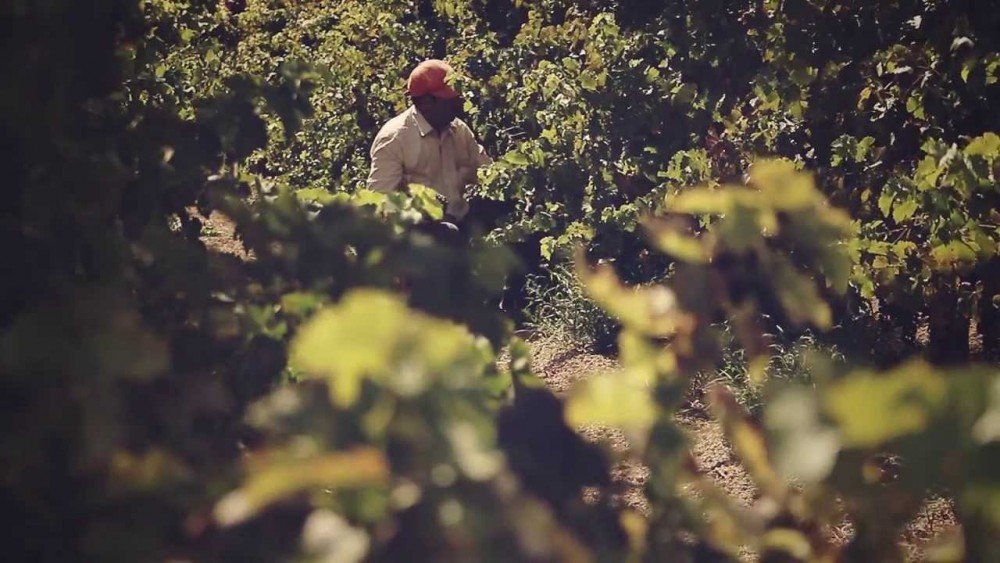
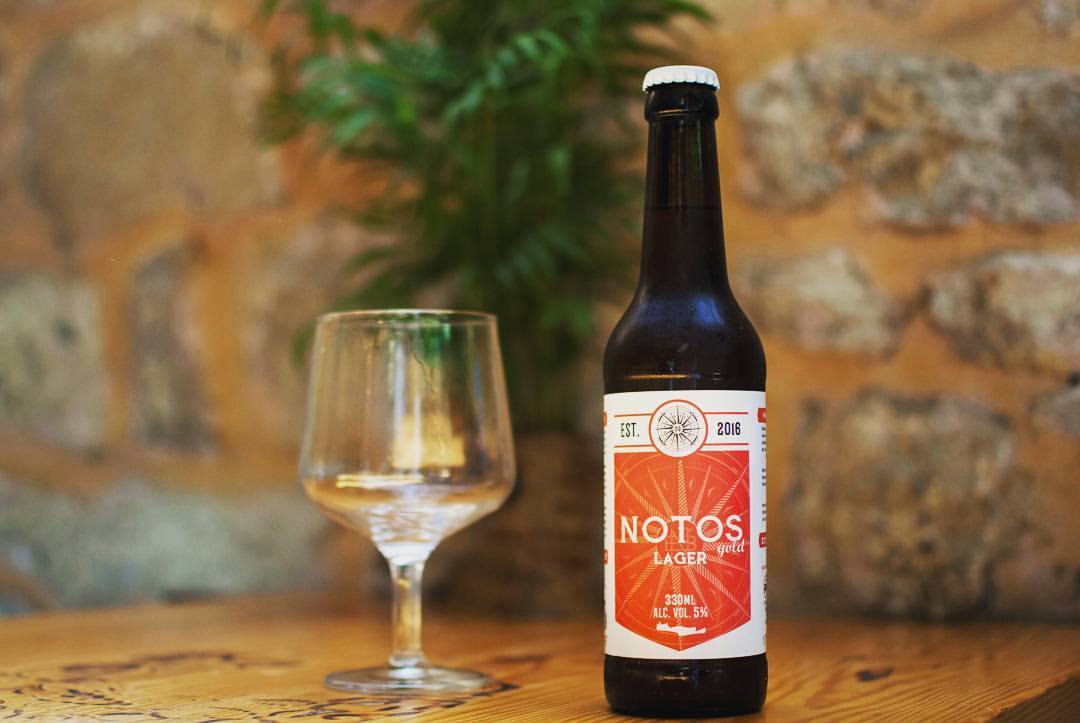

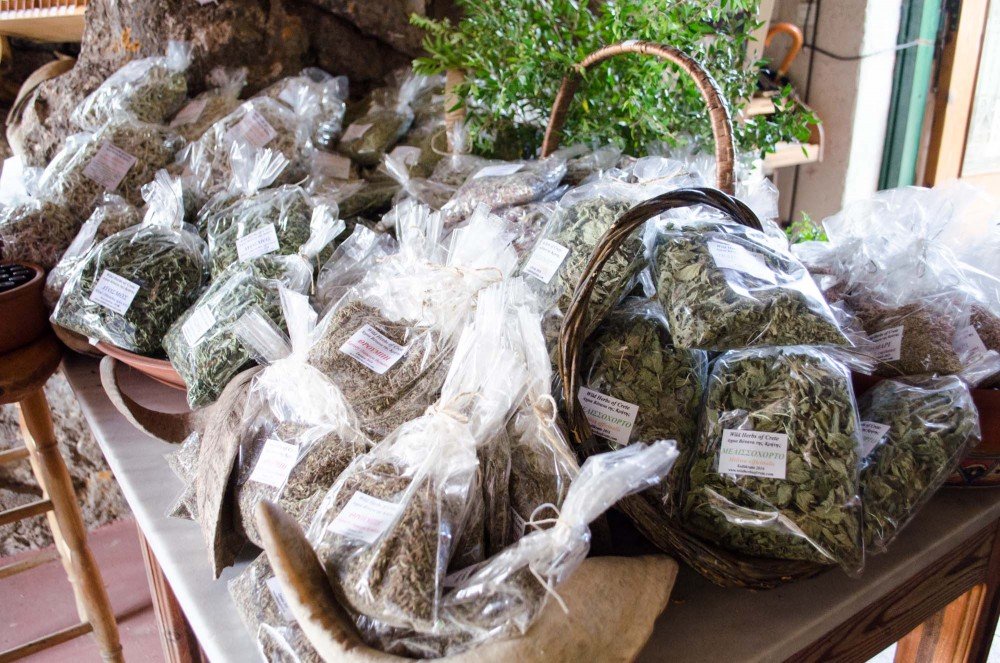 Malotira, a caffeine-free tea provides anti-inflammatory, antiviral, antibacterial, and antifungal benefits. It supports heart health, strengthens immunity, aids digestion, and may improve memory in dementia cases. Cretan Mountain Tea is commonly used for cold relief, sore throat, respiratory issues, fever reduction and is steeped in just-boiled water for 7-10 minutes and can be enjoyed hot or cold, optionally sweetened with honey, up to three times daily. Visitors can try Malotira tea in all cafes and “kafenion” across Crete
Malotira, a caffeine-free tea provides anti-inflammatory, antiviral, antibacterial, and antifungal benefits. It supports heart health, strengthens immunity, aids digestion, and may improve memory in dementia cases. Cretan Mountain Tea is commonly used for cold relief, sore throat, respiratory issues, fever reduction and is steeped in just-boiled water for 7-10 minutes and can be enjoyed hot or cold, optionally sweetened with honey, up to three times daily. Visitors can try Malotira tea in all cafes and “kafenion” across Crete